8 design ideas for a formal garden
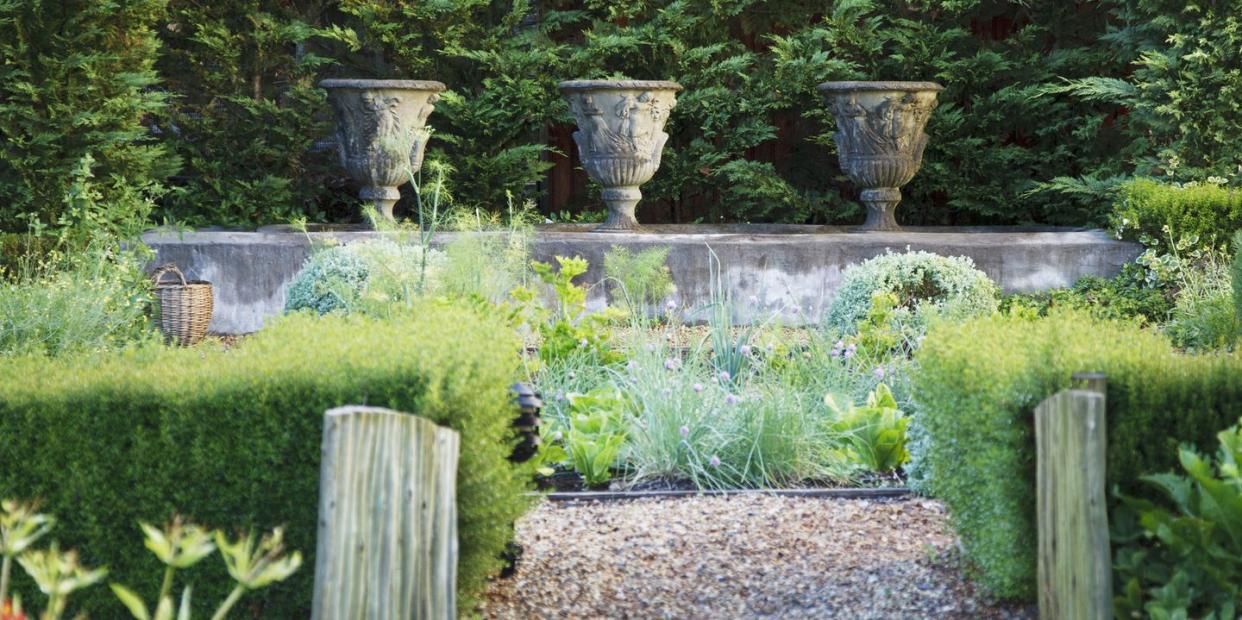
If you want to recreate a formal garden design, there are a number of elements you need to consider, including ornamental touches, scale, landscaping and planting. A formal garden oozes decadence and gives off an air of well-manicured finesse.
Adding grand, eye-catching ornaments like a classic urn or mirror, and choosing the right hedging to create a sense of privacy, help to transform a garden into a formal outdoor space perfect for hosting, meandering and taking afternoon tea.
Here are eight garden design ideas to help you create a formal garden style at home.
1. Ornament
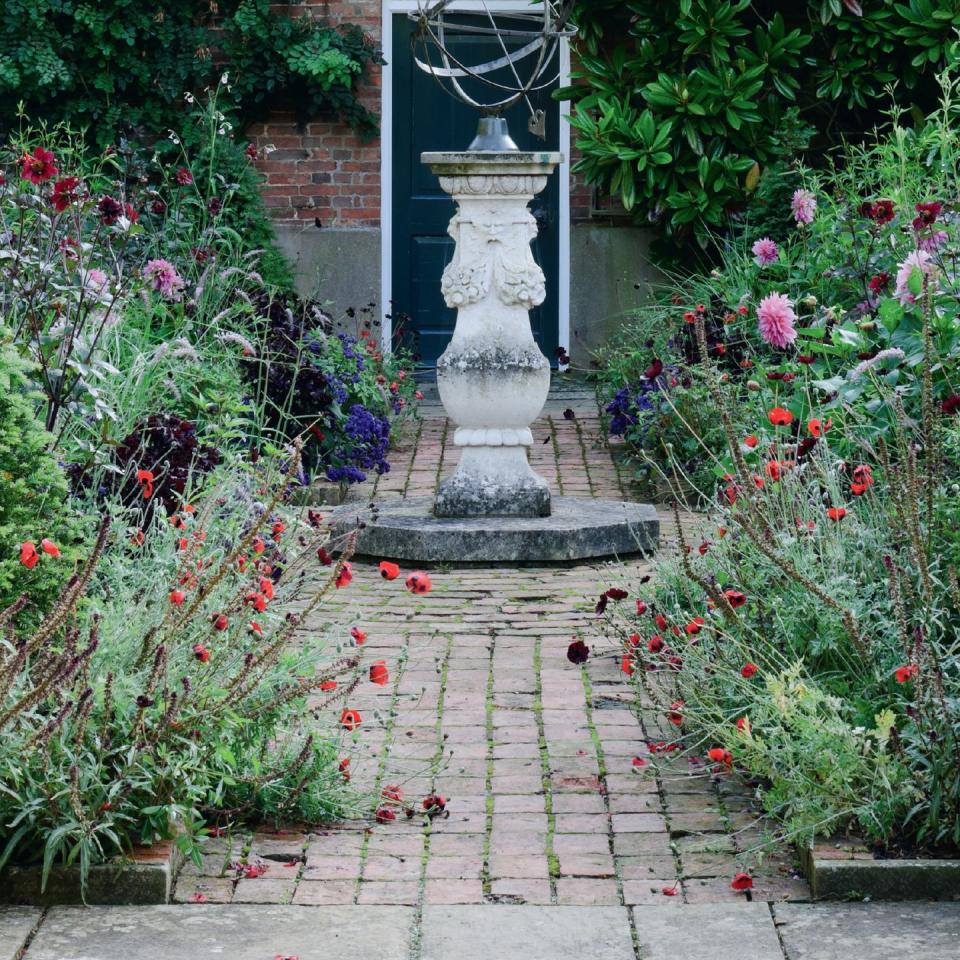
The conventional route favours classical urns, a Lutyens bench and statuary. Or you could opt for something different: giant carved stone fruit or a wirework animal sculpture will give your garden instant personality. Outdoor mirrors are also now on trend. Search salvage yards for interesting architectural features, such as a sundial, bird bath or armillary globe. One or two large objects will look more effective than half a dozen smaller ones.
Here are a few suggestions:
14 solar water features for your garden
2. Design
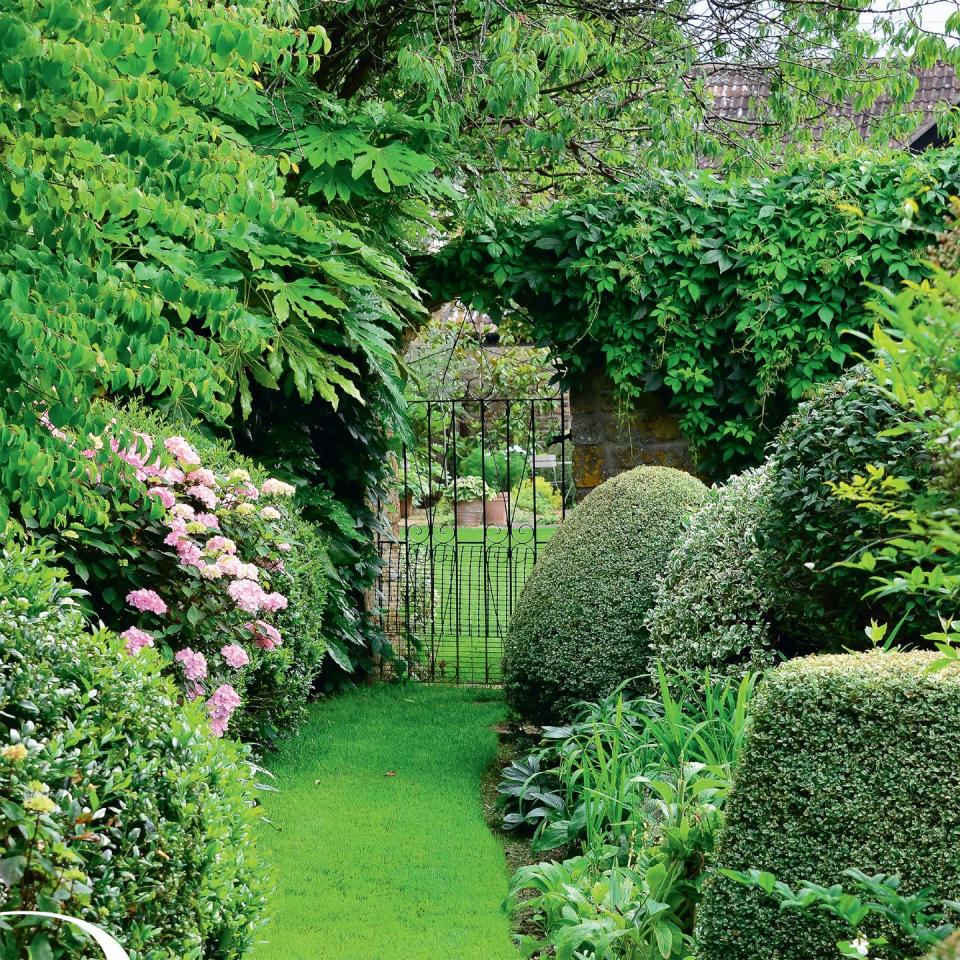
A useful trick for making a small garden appear longer is to narrow the width of the central path as it recedes. Playing with scale is an important element in a formal garden: even in a small plot, Lilliputian planting is best avoided as it can often look too fussy. If there isn’t enough room for everything you would like to incorporate, pare back your ideas or design it as if it is a fragment of a larger garden. Formal planting gives a sculptural quality and is a frame for softer seasonal schemes.
3. Trees
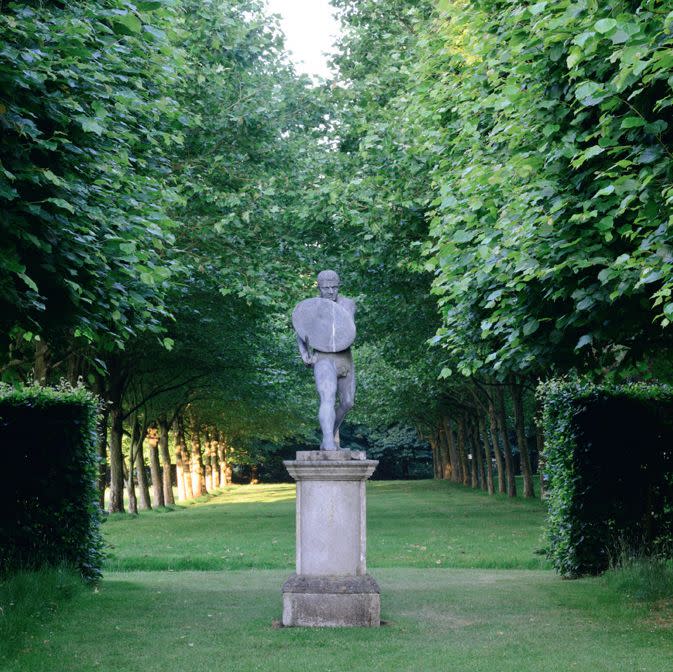
When trees are being incorporated into a formal garden they need to be carefully chosen. Ideally, they should be compact even in maturity, look good year-round and be easy to control by clipping. Crab apple, quince (Cydonia not Chaenomeles) and hawthorn are all suitable and have the added attraction of blossom and fruit, while the foliage of the weeping silver pear contrasts wonderfully with dark evergreen yew. By raising the crown (removing the lower branches) of existing trees, their dominant effect can be
reduced so that there is a more open aspect with improved light.
4. Hedges
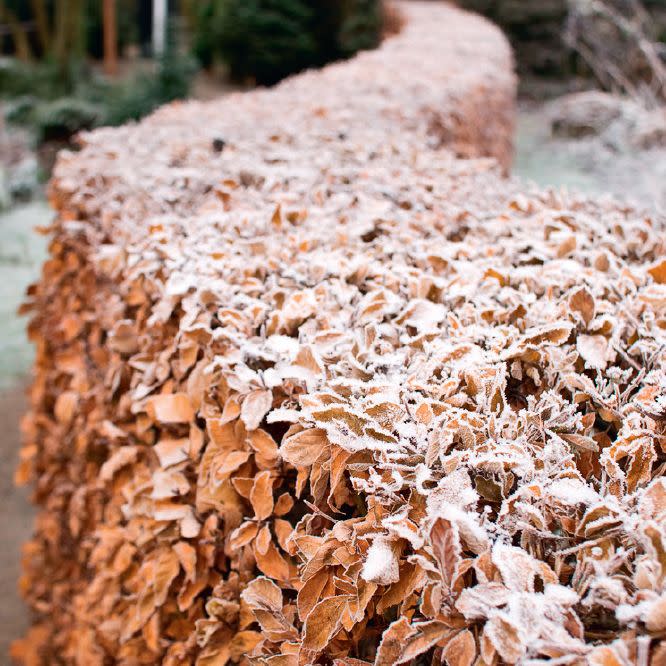
Unless your formal garden happens to be contained within walls, hedges can be used to perform that role, giving a sense of enclosure and separation. The formal effect tends to be diluted if the garden is open to its surroundings because the eye is easily distracted by colour and views. Hedges also create a backdrop against which topiary can be framed. Yew is the traditional choice for hedging as its dense evergreen foliage provides the most solid of living boundaries. However, the introduction of some deciduous varieties, for example beech or hornbeam, will lighten the boundaries and make the overall effect less sombre.
5. Hard landscaping

Consistency in the use of materials will help marry different elements, such as paving, planters, pots, seats and plant supports. Terracotta and brick look wonderful together, as do stone and oak (which weathers to a silvery grey). Eliminate any browny-orange wood stain with a colour, such as Willow from Cuprinol’s Garden Shades range.
6. Framework

Formal gardens are about differentiating the ‘tame’ from the ‘wild’. So, paths are straight, hedges are clipped, trees are trimmed and order prevails. Generally, plants are restricted in colour and variety and there is a consistency to the hard-landscaping materials. If it sounds a bit dull, the introduction of ornamental flourishes can be an invigorating departure from all the restraint.
7. Topiary
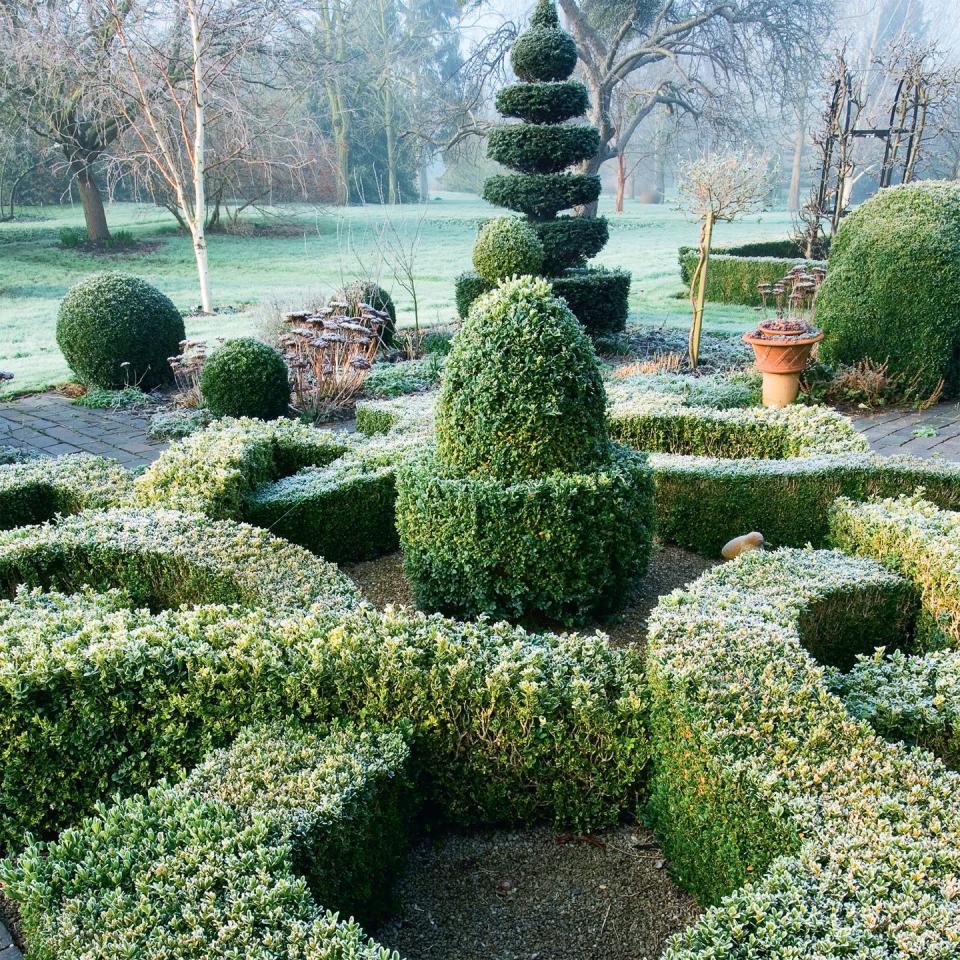
This can be as simple as half a dozen box balls in matching pots in a paved courtyard, or something far grander where sculpted shapes are arranged along paths or in a box parterre (pictured). Topiary gives a garden a three-dimensional quality. Scale is important: if you think of the garden as a chessboard and topiary as the pieces, the larger the board, the larger the pieces need to be. Bigger topiary can be expensive, so buy small and use wire or willow frames to outline the shapes until it matures.
8. Water features
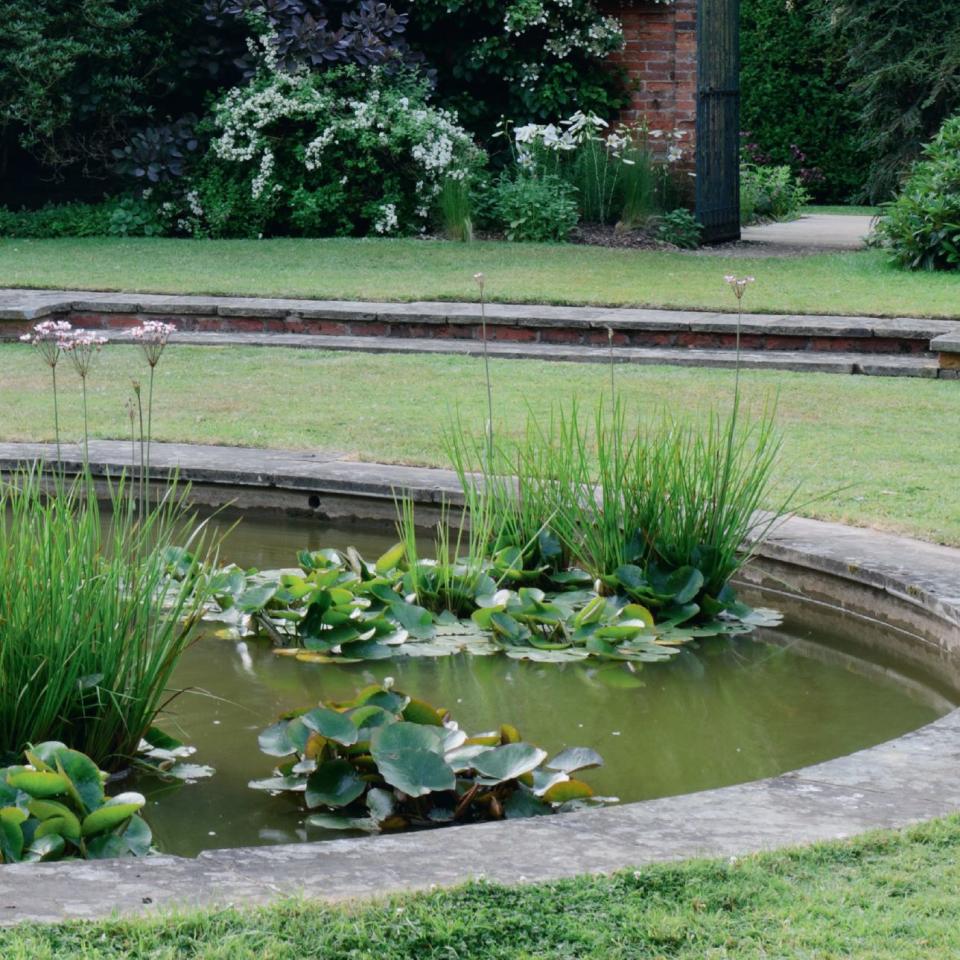
Water can be used to introduce life and movement. This is particularly effective when a fountain or a waterspout is incorporated into the design. Running or splashing water also masks intrusive background noise. Bear in mind, though, that moving water does have an energising effect and that if you want something more tranquil, still water may be preferable. A wide ledge surrounding the pool will provide informal seating without cluttering the garden with furniture. Look to ancient Persian gardens for inspiration: with their quietly flowing rills and still, reflecting pools, they are perfect embodiments of the qualities water can bring to a formal garden.
Here are some suggestions:
11 ways to bring water into your garden
Looking for some potting shed inspiration? Country Living has launched gorgeous cottage-style sheds and summerhouses at Homebase – perfect for outdoor home offices. Coming in aurora green and thorpe grey, they're perfect for every garden scheme. MORE INFO
Like this article? Sign up to our newsletter to get more articles like this delivered straight to your inbox.SIGN UP
Looking for some positivity? Get Country Living magazine posted through your letterbox every month. SUBSCRIBE NOW
You Might Also Like


